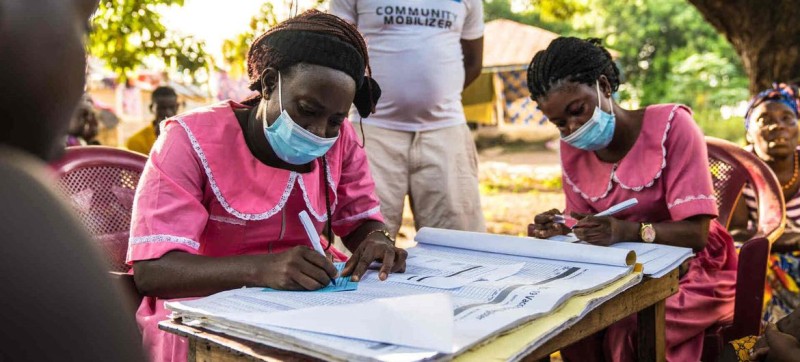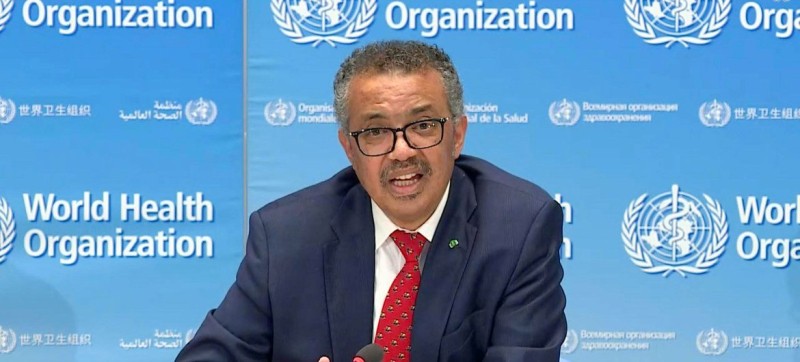
© WHO/Michael Duff Nurses work at a mobile COVID-19 vaccination clinic in Rofunta, Sierra Leone, in December 2022.
“Last week, COVID-19 claimed a life every three minutes – and that’s just the deaths we know about”, said Tedros Adhanom Ghebreyesus, WHO Director-General, briefing the media at the agency’s headquarters in Geneva.
Tweet URL
According to WHO’s Coronavirus Dashboard which has collated key statistics since early in the pandemic, the cumulative cases worldwide now stand at 765,222,932, with nearly seven million deaths: the precise figure currently stands at 6,921,614.
As of 30 April, a total of more than 13.3 billion vaccine doses have been administered worldwide.
‘Still killing, still changing’
He said the virus – first made a public health emergency of international concern by the WHO chief on 30 January, 2020 – was here to stay: “It is still killing and it is still changing. The risk remains of new variants emerging that cause new surges in cases and deaths.”
He said that the decision had not been made lightly. For the past year, the WHO-led Emergency Committee had been carefully examining the data, on the right time to lower the alarm.
For over 12 months, the pandemic “has been on a downward trend”, he said, with immunity increasing due to the highly effective vaccines developed in record time to fight the disease, and infections. Death rates have decreased and the pressure on once overwhelmed health systems, has eased.
“This trend has allowed most countries to return to life as we knew it before COVID-19”, Tedros added.
‘Torrent of mis- and disinformation’
But he reflected that the impact of the pandemic had “exposed political fault lines, within and between nations. It has eroded trust between people, governments and institutions, fuelled by a torrent of mis- and disinformation.”
Coronavirus Portal & News Updates
Readers can find information and guidance on the outbreak of the novel coronavirus (2019-nCoV) from the UN, World Health Organization and UN agencies here. For daily news updates from UN News, click here.
Tedros also noted the enormous damage inflicted on all aspects of global life by the virus, including enormous economic upheaval, “erasing trillions from GDP, disrupting travel and trade, shuttering businesses, and plunging millions into poverty.”
He reminded that as he was speaking, thousands around the world continue to fight for their lives in intensive care, and millions more, will live for the foreseeable future, “with the debilitating effects” of post-COVID conditions, or so-called “long COVID”.
The WHO chief said that at one level, the end of the emergency was a moment to celebrate, and he paid tribute to the “incredible skill and selfless dedication of health and care workers” worldwide.

UN Photo/Evan Schneider WHO Director-General Tedros Adhanom Ghebreyesus briefs at WHO headquarters with a call for support for the global collaboration to accelerate the development, production and equitable access to new COVID-19 tools (file photo).
Reflecting on the ‘deep scars’
But at another level, it was a time for deep reflection, with COVID continuing to leave “deep scars on our world.”
“These scars must serve as a permanent reminder of the potential for new viruses to emerge, with devastating consequences”, he said.
Learn from mistakes
Many mistakes were made, including a lack of coordination, equity and solidarity, which meant that existing tools and technologies were not best used to combat the virus.
“We must promise ourselves and our children and grandchildren, that we will never make those mistakes again”, he said.
“This experience must change us all for the better. It must make us more determined to fulfil the vision that nations had when they founded the WHO in 1948: the highest possible standard of health, for all people.”

